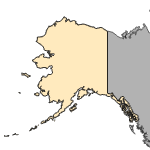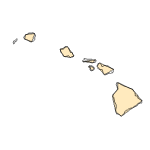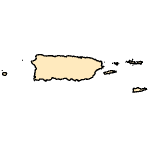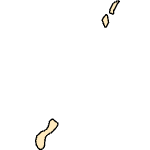Hemigrammus ocellifer
(head-and-taillight tetra)
Fishes
Exotic |
|
Common name: head-and-taillight tetra
Taxonomy: available through
www.itis.gov
Identification: The genus Hemigrammus needs systematic revision. See Géry (1977) for identification key and photographs. Color photographs were also provided in Axelrod et al. (1985) and Sakurai et al. (1993).
Size: 4 cm.
Native Range: Tropical America. The true Hemigrammus ocellifer is native to drainages in northeastern South America, including French Guiana, Guyana, and Venezuela (Géry 1977). Closely related members of the genus occur from Venezuela to Argentina (Géry 1977).



|

Alaska |

Hawaii |

Puerto Rico &
Virgin Islands |

Guam Saipan |
Hydrologic Unit Codes (HUCs) Explained
Interactive maps: Point Distribution Maps
Nonindigenous Occurrences:
Table 1. States with nonindigenous occurrences, the earliest and latest observations in each state, and the tally and names of HUCs with observations†. Names and dates are hyperlinked to their relevant specimen records. The list of references for all nonindigenous occurrences of Hemigrammus ocellifer are found here.
Table last updated 11/21/2024
† Populations may not be currently present.
Means of Introduction: Records represent escapes from areas of the hot springs used for culturing ornamental fish.
Status: Reported from Colorado.
Impact of Introduction: The impacts of this species are currently unknown, as no studies have been done to determine how it has affected ecosystems in the invaded range. The absence of data does not equate to lack of effects. It does, however, mean that research is required to evaluate effects before conclusions can be made.
References: (click for full references)
Axelrod, H. R., W. E. Burgess, N. Pronek, and J. G. Walls. 1985. Dr. Axelrod's atlas of freshwater aquarium fishes. Tropical Fish Hobbyist Publications, Inc., Neptune City, NJ.
Géry, J. 1977. Characoids of the world. Tropical Fish Hobbyist Publications, Inc., Neptune City, NJ.
Zuckerman, L. - Aquatic Ecologist, Kansas Department of Wildlife and Parks, Pratt, KS.
Zuckerman, L. D., and R. J. Behnke. 1986. Introduced fishes in the San Luis Valley, Colorado. Pages 435-452 in R. H. Stroud, editor. Fish culture in fisheries management. Proceedings of a symposium on the role of fish culture in fisheries management at Lake Ozark, MO, March 31-April 3, 1985. American Fisheries Society, Bethesda, MD.
FishBase Summary
Author:
Nico, L.
Revision Date: 11/13/2003
Peer Review Date: 11/13/2003
Citation Information:
Nico, L., 2024, Hemigrammus ocellifer (Steindachner, 1882): U.S. Geological Survey, Nonindigenous Aquatic Species Database, Gainesville, FL, https://nas.er.usgs.gov/queries/FactSheet.aspx?SpeciesID=421, Revision Date: 11/13/2003, Peer Review Date: 11/13/2003, Access Date: 11/21/2024
This information is preliminary or provisional and is subject to revision. It is being provided to meet the need for timely best science. The information has not received final approval by the U.S. Geological Survey (USGS) and is provided on the condition that neither the USGS nor the U.S. Government shall be held liable for any damages resulting from the authorized or unauthorized use of the information.